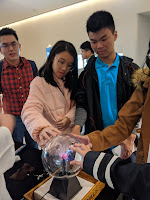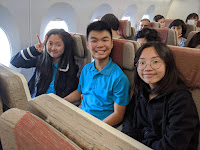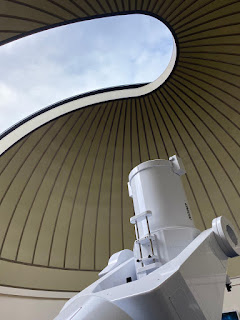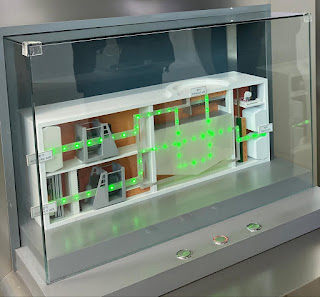Brief Introduction of our day!
Today we visited the Samsung Innovation Museum! Read on to find out more!
Day 6
On our last morning in Seoul, we made our way to Suwon to visit the Samsung Innovation Museum. Here, we got to learn about the history of Korea's electronic industry, as well as the past, present and future of the semiconductor, display and mobile industries, the very industries in which Samsung has made great achievements!
Interactive booth on static electricity
On our last morning in Seoul, we made our way to Suwon to visit the Samsung Innovation Museum. Here, we got to learn about the history of Korea's electronic industry, as well as the past, present and future of the semiconductor, display and mobile industries, the very industries in which Samsung has made great achievements!
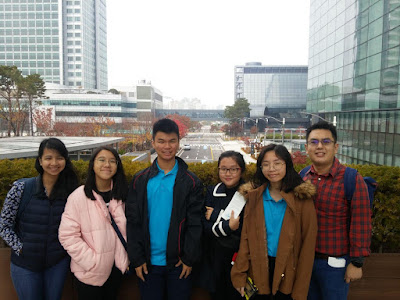 |
| On our way to Samsung Innovation Museum |
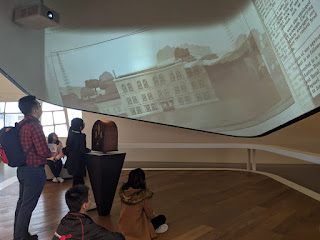 |
| Watching an illustration on the history of radio communications! |
 |
| Here, we learnt about the history of light! |
 |
| Connected real-time LCD displays |
 |
| Real-time writing animation |
Here are our reflections that capture our learning at the Samsung Innovation Museum:
"At the Samsung Innovation Museum, I was intrigued by the principle of the arc lamp.
In 1802, Humphrey Davy experimented with the concept of electrical lighting by attaching two carbon rods on the positive and negative poles of a battery. When the two carbon electrodes were separated from each other, an electric arc was generated in between them, completing a full circuit.
This was the first practical electric light, how cool is that?" - Gao Jie
"At the Samsung Innovation Museum, I was fascinated by the history and innovation of washing machines throughout the years!
The first washing machine was created in 1851, where James King from the United States invented a manually operated cylinder-type washing machine. It used repeated movements to compress the air for washing, rinsing and spin-drying. In 1874, William Blackstone (also from the United States) designed a hand-driven washing machine as a present for his wife. It was similar to King’s washing machine, but was the first washing machine made specifically for home use.
It is so amazing that those were the humble beginnings of the household necessity many of us can't live without today!" - Beatrice
"At the Samsung Innovation Museum, I was really interested in the workings of semiconductors.
Semiconductors used for memory chips or system ICs have partial properties of both conductors and non-conductors. When light, heat or other impurities are applied, changes in the energy states in the semi-conductor occur, allowing electrons to move, thus the flow of electricity. Two elements, Germanium and Silicon are the major components used in the fabrication of semi-conductor substrates.
It is amazing to think that so many of our technological gadgets depend on the workings of semiconductors! Our lives would be so different without this basic building block of technology." - Jiahuey
Semiconductors used for memory chips or system ICs have partial properties of both conductors and non-conductors. When light, heat or other impurities are applied, changes in the energy states in the semi-conductor occur, allowing electrons to move, thus the flow of electricity. Two elements, Germanium and Silicon are the major components used in the fabrication of semi-conductor substrates.
It is amazing to think that so many of our technological gadgets depend on the workings of semiconductors! Our lives would be so different without this basic building block of technology." - Jiahuey
"At the Samsung Innovation Museum, I was captivated by the three new types of screen displays; 3D displays, transparent displays and flexible displays.
- 3D displays enable us to see holographic images without the need of 3D Glasses.
- Transparent displays are basically transparent screens, where one is able to see images displayed against the backdrop of the surroundings, as compared to conventional opaque screens.
- Flexible displays are made of organic materials which are flexible in nature and which are being used in new-age TVs (like the one at the LG signature showroom) and in foldable phones. As compared with the more prevalent flat screen displays used in most electronics devices, the flexible display has better durability, lighter weight, thinner dimensions, and unique software commands.
After our visit at the museum, it was time for our last meal in Seoul before heading to the airport. At the airport, it was a bittersweet farewell to our driver and guide. We will definitely miss the long bus journeys and little nuggets of information from Mr Lim. Thank you so much for taking such good care of us!
 |
| Our last meal in Korea:( |
 |
| With our Oppa driver and bus! |
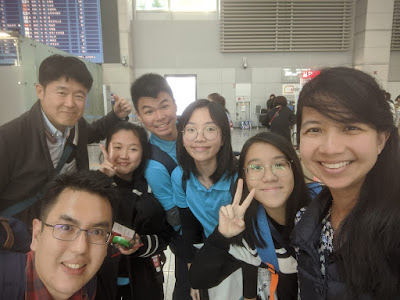 |
| A farewell picture with our knowledgeable guide Mr Lim! |
PS: We have arrived safely at Changi Airport! On the plane, we had a very interesting experience! Just before landing, a video took us through some stretching exercise and all the locals were diligently following along so we joined in too! :D
 |
| Mass stretching on the plane! What fun! |
 |
| We are home! |
We've come to the end of our last blog post!
Our heartfelt thanks goes out to the following people for making this trip possible and such an inspiring experience for us:
Shell for sponsoring the best learning journey of our lives, we are truly thankful.
Our Shell mentor Ms Ong Loo Xin for her belief in us and for her support throughout our Nxplorers journey.
Science Centre Singapore for organising Nxplorers 2019 and for giving us experiences that have inspired us to embrace and use our STEM education to change the world for the better.
Mr Chester Ong for his unwavering support and encouragement over the years.
Our STEM INC mentor Mr Wendell Wong for his expertise and help.
Our School Leaders for their invaluable feedback and support in granting us this opportunity, it really means a lot to us.
Our Teachers for their understanding, care and concern over the course of this journey.
Our Families for encouraging us and for being proud of us.
Our friends for being our cheerleaders and for coming to support us at the finals.
From the bottom of our hearts, thank you!

